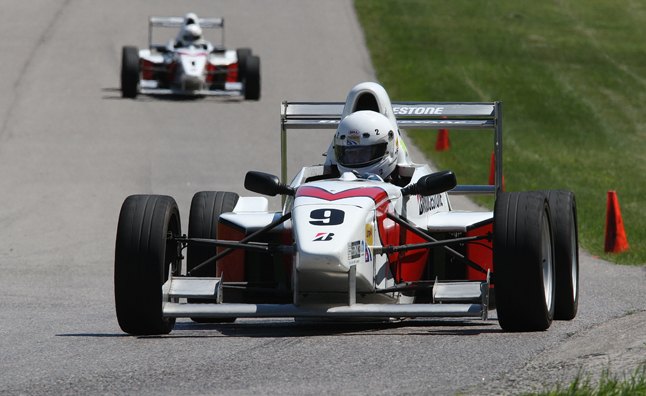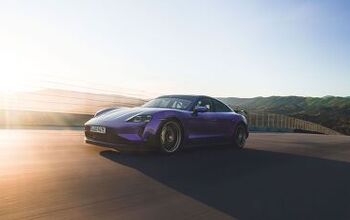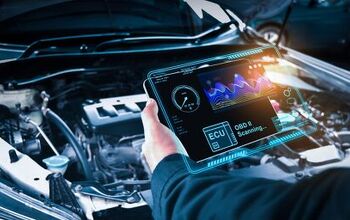Driver's Ed: Learning Fundamentals Without Fluff in an Open Wheel Race Car

Modern traction control and braking systems have their roots in motorsports, but now make even the most mundane commuter car an easier and safer driving experience.
As the Features Editor at AutoGuide.com, I rarely get the chance to step foot on a track, let alone drive something as exotic as a race car. More often than not my time is spent writing and researching stories on automotive industry trends, future products and technologies as well as pieces that help make your car shopping experience easier. But today my research is hands on.
I’m at the Bridgestone Racing Academy, just outside of Toronto, Canada, and I’m about to get a lesson in vehicle dynamics and get back to the basics in a 900-lb, 170-hp Van Diemen Formula 2000 race car.
These cars are very different from the everyday vehicles I’ve had the pleasure of driving, and the lessons the Van Diemen race cars help teach will be necessary going forward in my young career as an automotive journalist.
SUPERCAR PERFORMANCE
These cars may only be packing a 2.3-liter engine from an old Mazda3, but when paired with the light weight structure, the power-to-weight ratio is the same as Chevrolet’s top-tier Corvette ZR1 or the Audi R8 supercar with a 0-60 time of just 4 seconds.
They’re incredibly sensitive vehicles too. Treat them harshly and they’ll embarrass you. Stalling isn’t uncommon with a clutch pedal that feels about an inch and a half long, while once up to speed, shifts from the sequential 5-speed box are incredibly fast.
The cars go fast but they stop even faster, with a 60-0 time of 3 seconds, something that’s hard to replicate in the world of consumer cars. Finally, in an effort to keep these little monsters on course, the Van Diemens have extensive aerodynamics that reward the driver with more grip, the faster they go.
LESSONS TO LEARN
Excited to get out behind the wheel, there’s someone here who’s even more enthusiastic. Brett Goodman, the owner and president of the Bridgestone Academy is visibly pumped, despite the fact that he sees a new class all the time and he won’t even be racing. He’s excited for us to experience how much fun his school can be and just what it can teach.
Jamie Fitzmaurice, the lead instructor at the academy, is the polar opposite. Enthusiastic, yes, but filled with warnings that this isn’t a video game. What happens out there is real and that’s what makes it truly fun.
In the classroom Fitzmaurice puts the focus on silky smooth inputs and weight transfer in order to not upset the weight of the car. See, as a car accelerates, weight is transferred to the rear of the vehicle. When braking, the car moves weight to the front of the vehicle. If I brake or accelerate too suddenly, a particular end of the car will lose important grip. This can be dangerous, especially during quick turns, and if I accelerate suddenly while the front wheels are turned, the vehicle can lose traction in the front end, and spin out.
The course is technical, which is perfect for beginners like myself. Every section has a purpose to teach.
The key is to drive smoothly. That means no sudden steering, stomping on the brake, or mashing the gas pedal. It might sound easy in theory, but as soon as I get behind the wheel of one of these incredibly fast machines, my natural instinct is to try to do everything as fast as the vehicle, which is very wrong.
Driving fast and smooth isn’t easy when the car doesn’t have power steering, ABS or traction control. Also unfamiliar is the sequential gearbox. It’s almost like an automatic, but with a clutch pedal. You press down on the clutch (which is almost directly to the left of the brake pedal) then push or pull a little lever (about the size of your thumb) then release the clutch. The first few laps, I have no idea which gear I’m in. There’s no indicator, just a number indicating your RPM.
WHITE KNUCKLES, RED FACE
My biggest challenge is to not overload the car with too much input. Braking, accelerating and turning should be, for the most part, three separate decisions, and when I start to combine them, the car lets me know.
When I do manage to drive the car smoothly, it’s the perfect feeling of man and machine. Or at least it felt that way until I found myself suddenly backwards in turn 2. Yes, I spun out. I lost focus, which is another thing the mentors at the school warned me about. If they feel fast when under control, they’re even faster out of control – and not in a good way.
The majority of vehicles I’ve driven have all been equipped with traction control, and my personal vehicle even has stability control. When traction loss is detected in these modern machines the car intervenes, either cutting out the power, or applying brakes to the appropriate wheels.
In these race cars, however, there’s no warning when you lose traction and no intervention from an onboard computer. Traction and stability control is such a common technology in cars today that my old habits of letting the car sort itself out was the polar opposite of what I should have done.
Back on the track, my mind is trying to go faster than the car. I’m looking for the next braking point, turn-in point, and apex and where I can accelerate again.
I focus on going faster next lap, but wonder how. I try braking for a corner a bit later, but I experience my first case of brake lock; a sheer moment of terror, zooming into a corner about 10mph faster than I should have with no control. No thanks. I don’t think I’ll do that again.
My other option: going a bit faster into the turns. Ignoring my sense of self-preservation I handily make it through the corner and am on my way to the next turn trying it again. Improved skill? Perhaps. Though I’m getting some help from the car’s aerodynamics. All those wings might look like the car will take off, but they actually do the complete opposite. The faster the car goes, the more planted it is, and the more grip it has. Again, very much unlike a street car.
STREET TIRES ON A RACE CAR?
One of the few things these open-wheel race cars have in common with something you or I might drive on the street are its tires. The Bridgestone Potenza RE-11 extreme performance summer tires equipped on these cars are road legal, although mainly used on high-performance vehicles.
The reason for using street tires goes far beyond a sponsorship agreement and the associated marketing speak about how lessons learned on the track help producer a better street tire.
Sticky slicks have to be up to temperature and when they lose grip they do so in a hurry. Comparatively, the Bridgestone Potenza RE-11s deliver constant grip and brake away gradually helping to translate these race car lessons to the street.
LESSONS LEARNED
A day at the track completed without safety net of ABS, stability and traction control, and the comfort of a plushy seat, I’m a wiser and more experienced driver.
Sliding back behind the wheel of my Honda Fit (my press car of the week), what’s most surprising, however, is how comfortable it feels. Yes, by comparison this econo-box sub-compact is like a day at the spa. And while there’s another lesson here, about not taking for granted the amenities in our every day cars, I’m fighting off the tendency to become complacent with all the comfort and safety features I’m now surrounded by.
While not cheap, the ‘Thrill of a Lifetime’ courses start at $595 and can reach up to $1,695.
A big dollar number, no doubt, it’s also a small price to pay for a wild experience and an important education, making me more skilled behind the wheel in an era when, increasingly, drivers have become passengers too.

Sami has an unquenchable thirst for car knowledge and has been at AutoGuide for the past six years. He has a degree in journalism and media studies from the University of Guelph-Humber in Toronto and has won multiple journalism awards from the Automotive Journalist Association of Canada. Sami is also on the jury for the World Car Awards.
More by Sami Haj-Assaad





































Comments
Join the conversation
So the Question is: A Corvette ZR-1, or one of these race cars?
I bet the Race Car has a better quality interior.